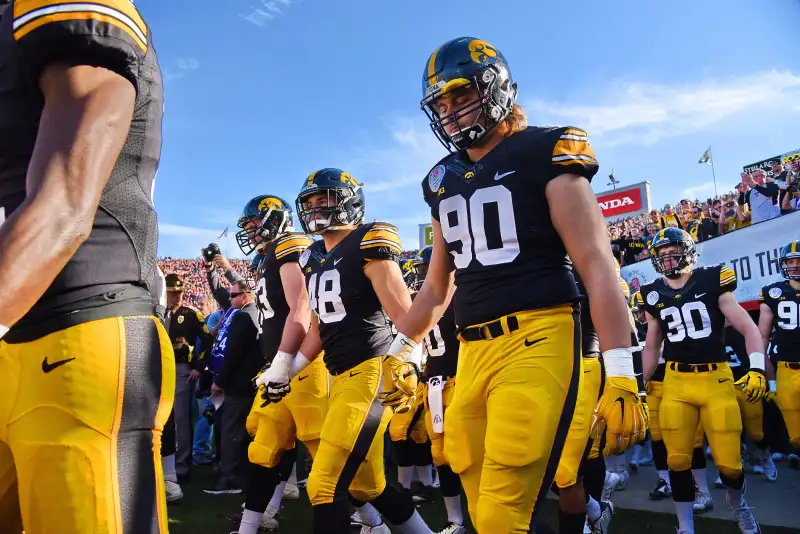Why Students Are the Biggest Losers in Today's College Bowl Games

Win Big. Lose Big.
That could be the epitaph for this year’s college football bowl games. For three weeks starting on December 19, American viewers had the opportunity to gorge on 40 televised games, most of which turned out to be empty calories.
The 41st game—for the national championship this Monday night—features Clemson versus Alabama. Regardless of the scoreboard, both teams will be winners in fame and fortune. Their conferences will get a good share of what could be $500 million in payouts. Last year’s championship drew about 33.4 million television fans.
But if that sounds like there’s a robust market for big-time college sports, outside of this championship finale the reality is very different. It’s a sobering story of uneven attendance, disappointing ratings, and low revenues. Here’s the scorecard:
- Empty seats. Bowl game attendance has declined for the fifth consecutive year. Five games reported attendance below 40,000 and one had just 17,000. For the Southeastern Conference–whose fan base is large and loyal—six bowl games drew crowds below their stadium capacity–and far below the 75,000 these teams typically attract during the regular season. A crowd of 50,000 might sound impressive, but not when your stadium capacity is 70,000 or more.
- Fewer viewers at home. At least half the bowl games are broadcast at unpopular times and dates and, perhaps not surprisingly, earn weak TV ratings. But even highly touted games, such as the Bowl Championship Series semifinals on New Year’s Eve and the Rose Bowl the following day, plunged in the ratings this year.
- Huge costs. Universities have to pay for a long list of bowl-related expenses, such as travel and lodging for the team, the presidential delegation, the marching band, cheerleaders, and alumni boosters, as well as for the team and coaches to practice for an extra month before departing for the festivities. Going to a bowl game can also drive up athletic department salaries, as coaches often receive incentive bonus pay.
- Paltry payouts. College officials who count on a bowl game to balance their athletics department budget are in for a shock. Often a college team that accepts a bowl invitation loses money. Payouts for the secondary bowl games are especially low.
In fact, for half of all bowl games, participating colleges receive less than $2 million. Eleven games do not even pay a million dollars–and one pays a whopping $165,000. That means academics often pays for athletics, not the other way around. In 1991, the University of Michigan’s creative financing was to use money from a National Science Foundation research grant to pay the bowl bills. The feds found out, and the Wolverines got penalized—so it’s not a good model for other colleges to imitate.
The big picture shows an enterprise buoyed by its highest profile games but burdened by a weak collection of lackluster college teams and bowl events. Is a team from a mediocre conference with a 5-7 season record really going to attract spectators or sponsors?
The imbalanced rewards for a few conferences and teams in college football bowls are symptomatic of the implosion in financing for big-time college sports. Regular season football attendance is down, even for many major teams. Expenses are rising. Only seven college sports programs consistently operate in the black. Even in the Big Five conferences, 28 programs —including Big Ten conference members Maryland and Rutgers—lose money year after year.
It’s not only the colleges that misjudged the market. ESPN, which broadcast most of the recent bowl games, was banking on high ratings for the two semifinal championships on New Year’s Eve. Both games were boring blow-outs whose ratings dropped 40%. Disenchanted viewers changed channels, perhaps hoping to watch the season’s first episode of Downton Abbey, which proved more exciting than the highly promoted college games.
College coaches and presidents will protest that the “exposure” for their institution is priceless. It’s not—it’s expensive and ineffective. There’s little systematic evidence to show that bowl games help much in fundraising, admissions, or recruitment at most colleges.

When bowl games flop at the box office, Football Bowl Association executives deflect the data. Financial losses are explained away because, after all, bowl games are not about revenues or ratings, but “the experience” for college players and alumni. I doubt the television networks share this view.
Bowling for Dollars was an apt title for a 1970s television game show broadcast from a bowling alley in Detroit. But it’s a terrible strategy for college sports programs today.
Guest columnist John R. Thelin is professor of Educational Policy Studies at the University of Kentucky. He is also the author of A History of American Higher Education, published by Johns Hopkins University Press.
